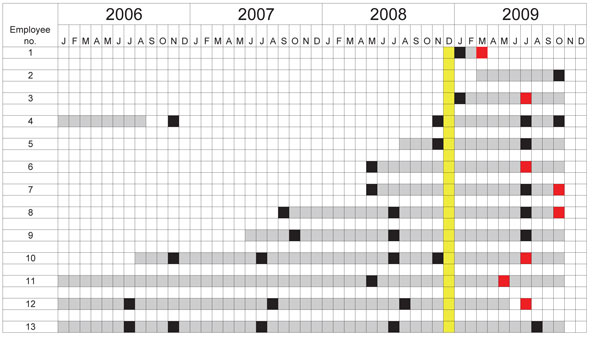Volume 17, Number 3—March 2011
Research
Elephant-to-Human Transmission of Tuberculosis, 2009
Figure

Figure. Tuberculin skin test (TST) conversion timeline for 13 employees who worked in the quarantine area of an elephant refuge, Tennessee, USA, 2009. Gray, exposure to quarantine barn; black, negative TST result; red, positive TST result; yellow, elephant L positive for Mycobacterium tuberculosis.
Page created: July 25, 2011
Page updated: July 25, 2011
Page reviewed: July 25, 2011
The conclusions, findings, and opinions expressed by authors contributing to this journal do not necessarily reflect the official position of the U.S. Department of Health and Human Services, the Public Health Service, the Centers for Disease Control and Prevention, or the authors' affiliated institutions. Use of trade names is for identification only and does not imply endorsement by any of the groups named above.